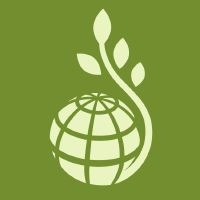Topic Menu
► Topic MenuTopic Editors

Plastics, Microplastics, and Nanoplastics in the Environment: Sources, Migration, Contamination, and Sustainable Management Strategies
Topic Information
Dear Colleagues,
Environmental pollutants such as microplastics and nanoplastics are becoming the most serious global environmental issue, and have been a concern of scientists, governments, and the public. They originate from plastic products and lead to dramatic environmental contamination in freshwater, ocean, land, and air.
In recent years, many researchers have determined the origins, fate, risk assessment, and management methods of microplastic pollution. However, a good deal of knowledge gaps remain. Therefore, it is urgent to launch "Plastics, Microplastics, and Nanoplastics in the Environment: Sources, Migration, Contamination, and Sustainable Management Strategies" to address the serious and widespread impact of microplastic pollution in the environment.
This topic welcomes original research, reviews, short communications, comments, perspectives, and methods papers on the basis of (macro-, micro-, and nano-) plastic pollution and waste in all fields.
Submissions to the Topic will be subject to peer review before final publication. Papers must not be submitted to any other publication at the same time. The final decision regarding paper publication will be made based on peer-review reports and Topic Editors, or the Editor-in-Chief in cases of a conflict of interest. Published full-text papers will be available online on the Topic website. We sincerely hope that you will contribute your outstanding research.
Dr. Carlos Gravato
Prof. Dr. Nsikak U. Benson
Topic Editors
Keywords
- plastic pollution
- plastics in the environment
- quantification of plastics
- internalization of plastic particles
- impacts of plastic on biota
- target species and organs for plastic particles
Participating Journals
| Journal Name | Impact Factor | CiteScore | Launched Year | First Decision (median) | APC |
|---|---|---|---|---|---|

Environments
|
3.5 | 5.7 | 2014 | 25.7 Days | CHF 1800 |

International Journal of Environmental Research and Public Health
|
- | 7.3 | 2004 | 24.3 Days | CHF 2500 |

Journal of Marine Science and Engineering
|
2.7 | 4.4 | 2013 | 16.9 Days | CHF 2600 |

Toxics
|
3.9 | 4.5 | 2013 | 15.6 Days | CHF 2600 |

Water
|
3.0 | 5.8 | 2009 | 16.5 Days | CHF 2600 |

MDPI Topics is cooperating with Preprints.org and has built a direct connection between MDPI journals and Preprints.org. Authors are encouraged to enjoy the benefits by posting a preprint at Preprints.org prior to publication:
- Immediately share your ideas ahead of publication and establish your research priority;
- Protect your idea from being stolen with this time-stamped preprint article;
- Enhance the exposure and impact of your research;
- Receive feedback from your peers in advance;
- Have it indexed in Web of Science (Preprint Citation Index), Google Scholar, Crossref, SHARE, PrePubMed, Scilit and Europe PMC.


